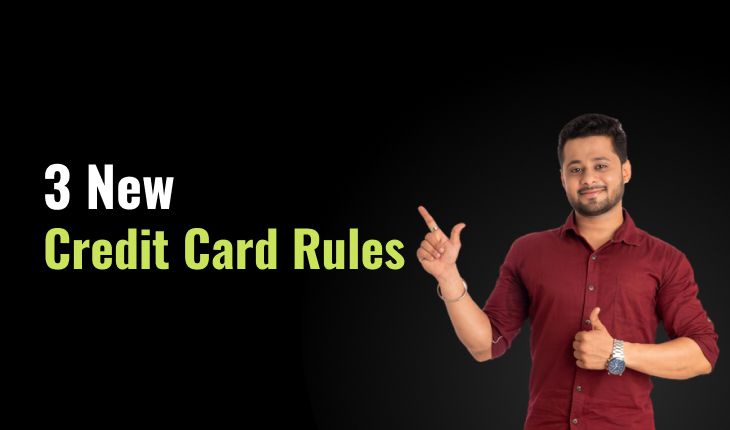3 New Credit Card Rules that will go into effect on October 1st, 2022

Last Updated : Oct. 14, 2022, 6:15 p.m.
RBI had issued regulations on 1st April 2022 to issue credit and debit cards . RBI had implemented regulations to improve the cardholder’s ability to make payments the new rules have launched.
On October 1, 2022, the RBI modified rules governing online debit and credit card payments. RBI issued regulatory guidelines in September 2022 to improve the user experience of digital payments. The deadline to make the tokenization system available on the e-commerce platform was July 20 but further extended by three months.
According to the RBI, tokenization will help to protect debit and credit card holders by adding a layer of defence against fraudsters.
3 New Credit Card Rules
Dive deeper into this article to understand in depth the 3 new credit card rules that will come into effect from 1 October 2022.
Cardholder Consent is Necessary to Exceed the Limit
The consent of the cardholder is necessary to exceed the credit limit. Card issuers are accountable to manage it. From 1 October 2022 onwards, the written permission of the cardholder is required to increase the credit limit.
Tokenization of Credit Card
Information may get stored while you make online payments through your credit or debit card. This is extremely dangerous as it may harm your pocket and put you in a difficult situation.
The website functions as a third payment app, transferring funds from banks to platforms using card information. Unsecured websites may lead to a data breach if they are hacked by fraudsters.
RBI had launched a tokenization system to secure transactions. As per the new RBI regulations, the third payment app can’t use the customer’s credit or debit card information. The tokenization system will encrypt the credit card number before it has been used for transactions.
One Time Password “OTP”
The new regulations require credit card issuers to get their OTP-based consent if the customer after the date of issuance hasn’t activated the card for more than 30 days.
In addition, the customer’s credit card may get rejected if he/she rejected the request for activation without opening an account within seven business days.
How Tokenization will Work?
To protect online transactions RBI had issued new regulations for debit and credit card users.
However, customers are not required to compulsorily tokenize their transactions. Those who wish to pay with cards and discard the tokenization system. However, customers who do not wish to use this system can continue to shop as usual by entering card information.
Mentioned below are the pointers that describe best the working mechanism of tokenization:
- To select products, navigate to the shopping section of any e-commerce platform or website.
- Put those items in your shopping cart.
- Now, in the payment section, choose the card payment option and enter your payment information.
- There will be an option to secure your card by the new RBI guidelines. When you select that option, a token will be generated.
- Enter the OTP that you have received.
- After entering the OTP your card information will be sent for token generation.
- The merchant will receive the token and save it in place of the customer’s card details.
Conclusion
According to reports, several store card details on third-party payment apps have been compromised. Customers had previously complained about data breaches. After such incidents the RBI issued regulations to create a secure payment environment.
Today while we are witnessing massive growth everywhere, India’s cyber infrastructure requires a major update. Customers usually make big payments online through debit or credit cards which should be protected. The tokenization system will act as a barrier and safeguard transactions from cyberattacks.